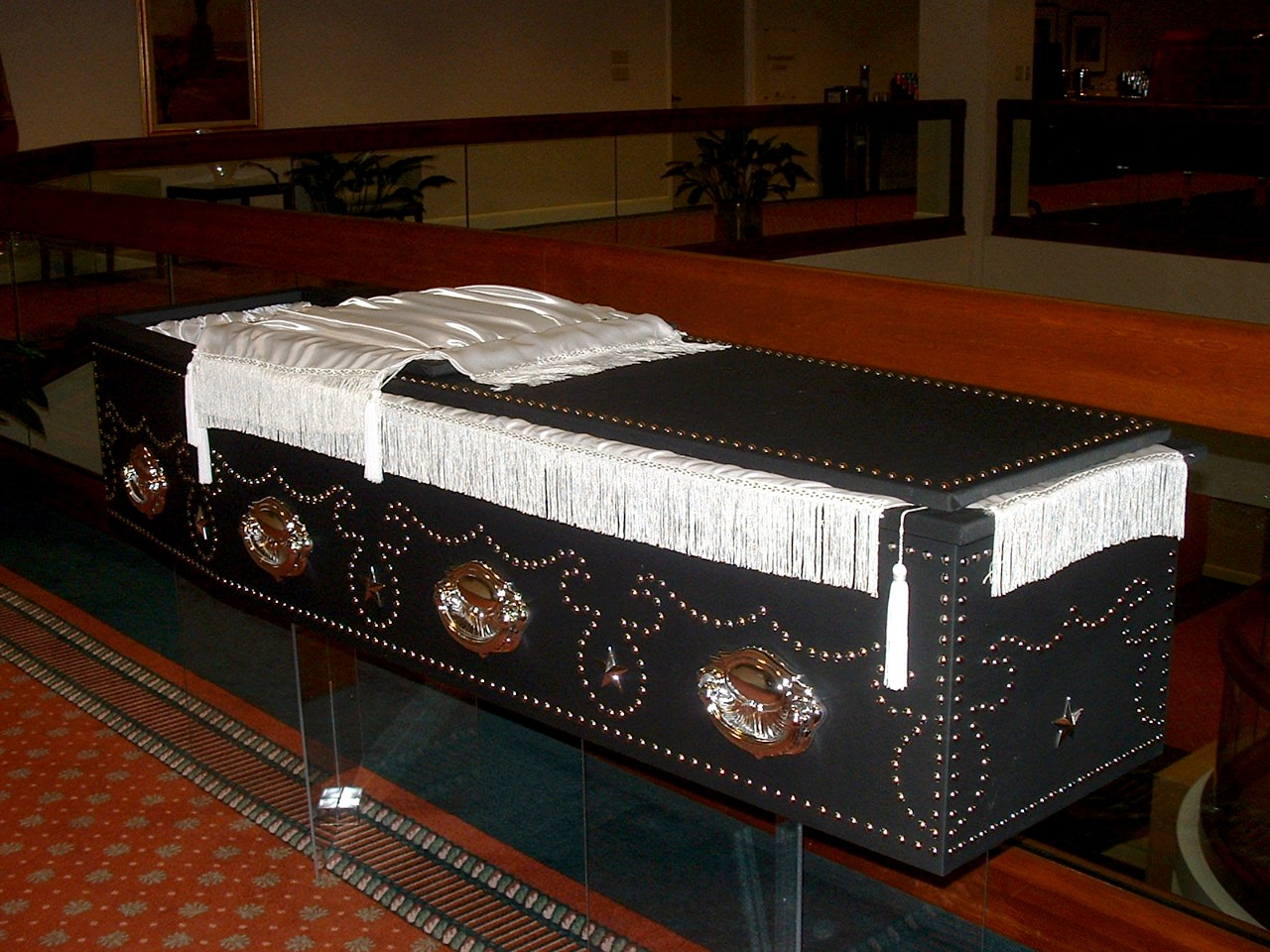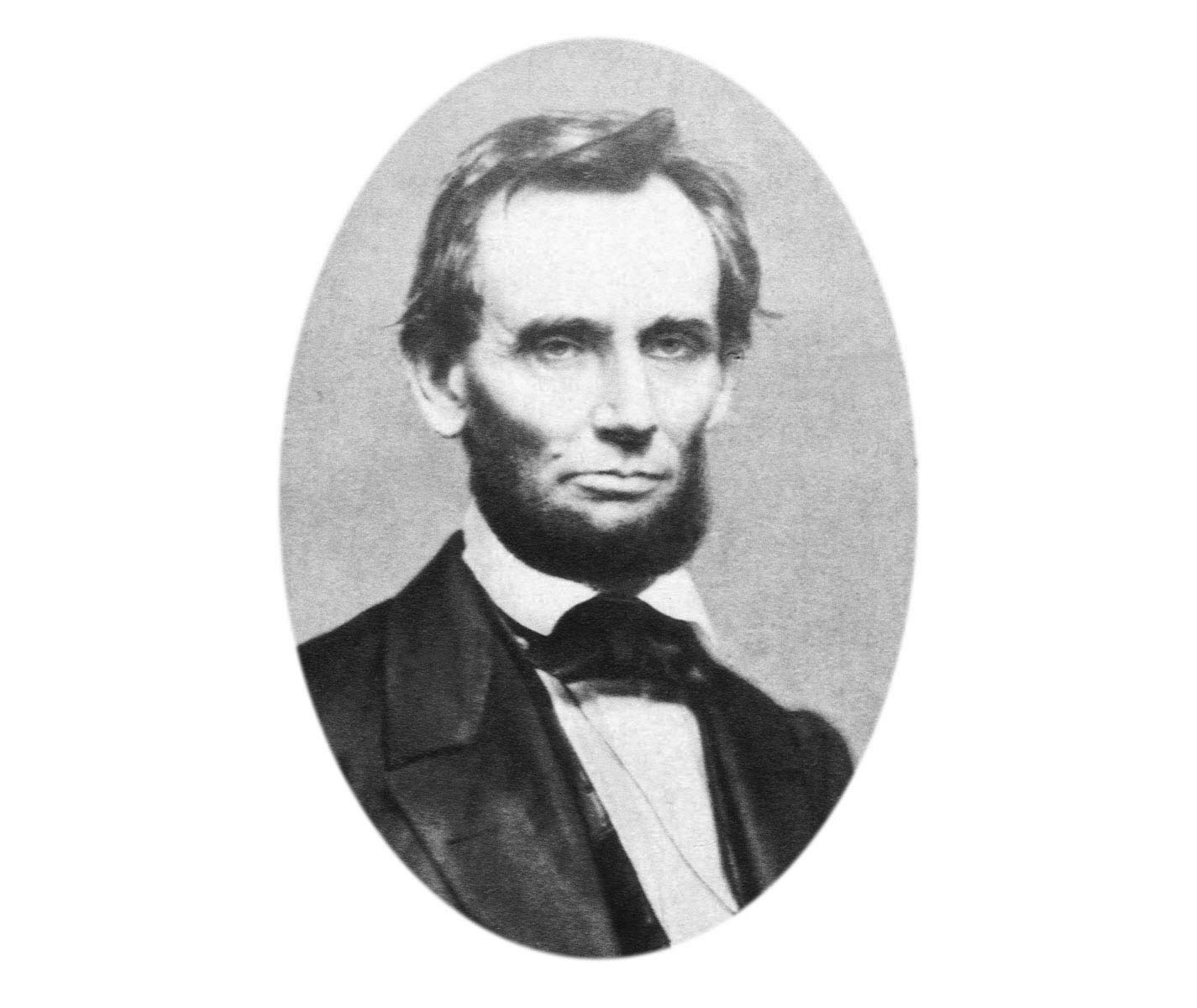


The Lincoln
replica casket will be on display on Wednesday, November 11 from 5pm to 8pm
at the Stratton-Karsteter Funeral Home in Versailles
or by appointment from
November 9-13.
Batesville Puts History on Display
The history books have come alive at several funeral homes in the past few years thanks to Batesville Casket Companyís authentic replica of
Abraham Lincolnís coffin. Many of our customers have put the coffin on display and opened their doors to the public for all to see. The
Lincoln Replica is often requested by funeral directors celebrating new funeral home openings and anniversaries, by historical museums and
Lincoln enthusiasts celebrating Lincolnís birth and death. The Lincoln Replicaís busiest months for traveling and showing are February
(Lincolnís birthday) and April (Lincolnís death).
Batesville has four traveling displays that are loaned to funeral homes all across the United States. The Lincoln Replica can be kept on
display at a funeral home for approximately one week and is then sent back to Batesville. So far the replicas have been to more than 100
cities.
Authentic down to the smallest details (except for being lined with lead and the silver plate), Batesvilleís replica is 6í 6Ē long, made of
solid walnut and completely covered in black broadcloth with a white satin interior. The outside is adorned with silver colored handles and
silver tacks, or pearls, extending the entire length of the coffinís sides. Lincolnís original casket included a silver plate in the center
of the lid inscribed with Lincolnís date of birth and death. This plate is not included on the replica.
The Director of Research & Development, Iljia Rodev, led Batesvilleís effort to create a replica of Lincolnís coffin as early as 1984. The
project was in response to a request from an Illinois museum to manufacture the coffin for an exhibit. After 1993, when the state funeral
association revealed the exact dimensions and materials of the original coffin, Batesville made its own replicas. These replicas were then
made available to funeral homes for display. There is currently a waiting list for the Lincoln Replicas all the way into 2016.
It is one of five replicas made 10 years ago by the Batesville Casket Company of Indiana. The coffin was built on the only known surviving
1865 photograph of the one in which President Lincoln is shown lying in state.
Four of the five coffin replicas travel the nation for display at funeral homes and the fifth remains as part of the permanent collection at
the Abraham Lincoln Presidential Library and Museum in Springfield, Illinois.
Custom For Lincoln 
President Lincolnís coffin was the most elaborate of that time. His coffin was constructed of solid walnut, lined with lead and completely
covered in expensive black cloth. It was 6 feet, 6 inches long and was decorated with sterling silver handles and sterling silver studs
extending the entire length of its sides. Though the coffin appears austere compared to modern caskets, the original was custom made for the
president and featured a removable two-part top and a lead lining. The replica does not contain lead. The distinction between a coffin and
a casket is that a coffin has six sides (diamond shaped) and a casket has four sides.
Revenge, greed & curiosity
The coffin played prominently in a plot by thieves to steal the presidentís body. In 1876, when a counterfeiting ringís top engraver was
imprisoned, his gang decided to break into the tomb and steal the body. They planned to hold Lincoln for a ransom of $200,000 in gold and
the freedom of the engraver. As the coffin was being removed from the tomb, the plot was foiled when lawmen made their move.
On April 14, 1865, John Wilkes Booth shot President Abraham Lincoln while Lincoln attended a performance at Fordís Theater in Washington,
D.C. The mortally wounded President was taken across the street to the William Peterson house where he died at 7:22 a.m. on April 15, 1865.
The first public viewing of Lincoln was held in the White House on April 18, 1865. Following the funeral on April 19, 1865, the coffin was
transported to the Capital for another public viewing. It was decided that President Lincoln should be returned to his home in Springfield,
Illinois for burial and not in Washington, D.C. as Congress had hoped.
President Lincolnís funeral train began the long journey to Springfield on April 21, 1865. The funeral train would travel the route that
Lincoln had made as president-elect. The only changes to the route were the omission of Cincinnati and Pittsburgh and the addition of
Chicago. President Lincolnís son William ďWillieĒ Lincoln, who died in 1862, was disinterred and placed on the funeral train to be buried
with his father in Springfield, Illinois.
Large funeral precessions were held at each major stop along the funeral route, as the coffin was transported from the train to the place of
public viewing. Cleveland, Ohio was the only city to hold its public viewing outdoors, as they did not have a building large enough to
accommodate the large crowds of mourners. Finally, on May 3, 1865, the funeral train reached its final destination of Springfield, Illinois.
On May 4, 1865, President Lincoln was buried in Oak Ridge Cemetery along with his son Willie. Mary Todd Lincoln, still too distraught, did
not attend the services of her late husband and remained in Washington, D.C.
At the time of their burial, President Lincoln and his son were placed in a temporary vault at Oak Ridge Cemetery awaiting the completion of
the Lincoln tomb. The Lincoln tomb was not completed until 1874. In 1876, when a counterfeiting ringís top engraver was imprisoned, his
gang decided to break into the tomb and steal the body. They planned to hold Lincoln for a ransom of $200,000 in gold and the freedom of the
engraver. As the body was being removed from the tomb, the plot was foiled when lawmen made their move.
In 1900, President Lincolnís son, Robert, was afraid that more attempts to steal the Presidentís body would be made. He decided that the
new burial chamber was inadequate and plans were made to permanently protect the President from any future attempts to enter the grave. It
was during this time of construction that the coffin of the President Lincoln was opened. A select few had the opportunity to view the body
of President Lincoln one last time.
Archive Staff Map Photos Preplanning Links Home